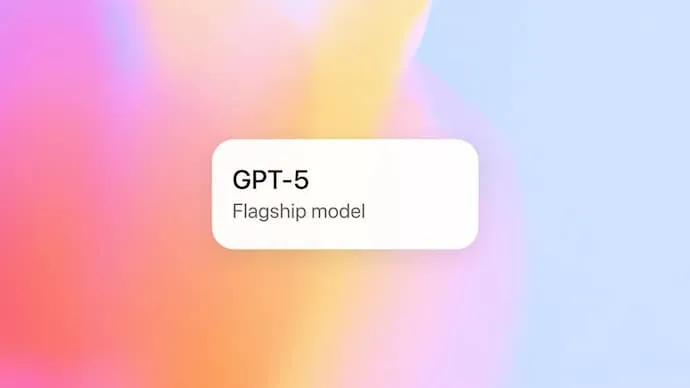Subscription tier selection directly determines the context window available in GPT-5. The context window, measured in tokens, sets the upper limit for how much text or data the model can process in a single request or conversation. This limit impacts the ability to work with large documents, maintain conversation memory, and handle complex, multi-step tasks.
Check Your GPT-5 Context Window by Subscription Tier
OpenAI ties the maximum context window in ChatGPT to your subscription plan. The context window represents the combined total of input and output tokens that can be processed at once. Here’s how the limits break down:
- Free Tier: 8,000 tokens per conversation.
- Plus Tier: 32,000 tokens per conversation.
- Pro and Enterprise Tiers: 128,000 tokens per conversation.
For API users, GPT-5 supports up to 400,000 tokens (272,000 input + 128,000 output) per request, but this is not available in the standard ChatGPT interface. The API is intended for developers and organizations needing to process large-scale or high-volume data.
Step 1: Verify your current subscription tier by visiting your ChatGPT account settings. This determines your available context window and usage quotas.
Step 2: For API usage, check the official OpenAI documentation for the latest context window details, as these may change with new releases or pricing updates.
Optimize Large Document Handling Within Context Limits
When uploading large files or working with extended conversations, exceeding the context window causes GPT-5 to lose track of earlier content, leading to incomplete answers or missing details. To optimize long-context tasks:
- Break up very large documents into smaller, logically separate sections before uploading.
- Summarize previous content and provide concise context in each new prompt to help the model retain relevant information.
- For coding or technical workflows, use session-based tools (such as Codex CLI or Cursor) to manage state and context across tasks.
- If working with the API, structure requests to fit within the 400K token limit, and use retrieval-augmented generation (RAG) methods for even larger datasets.
Step 1: Pre-process documents to fit within your tier’s token limit. For example, a 100-page PDF may need to be split into several 25-page sections for Plus users.
Step 2: Use summarization prompts at the end of each section to create a condensed version that you can feed into the next prompt, chaining summaries to retain continuity.
Step 3: For ongoing projects, save important context externally (in files or notes) and reintroduce only the most relevant parts in each new session or conversation.
Use GPT-5 API for Maximum Context Window
The GPT-5 API provides the largest available context window, suitable for advanced use cases like codebase analysis, research, or legal review. However, it requires technical setup and may incur additional costs based on token usage.
To leverage the full 400,000-token context window:
- Sign up for API access and obtain your API key from OpenAI.
- Use official SDKs or tools like Codex CLI, Cursor, or custom scripts to interact with the API.
- Configure your requests to specify input and output token limits, ensuring your data fits within the combined window.
- Monitor your usage to avoid unexpected charges, as API pricing is based on the number of tokens processed.
Step 1: Register for API access and review the pricing structure for input and output tokens.
Step 2: Prepare your data, making sure the total number of tokens (input plus expected output) does not exceed 400,000.
Step 3: Use the API to submit your prompt, specifying parameters such as max_tokens for output and reasoning_effort if you want more detailed, step-by-step answers.
Step 4: For very large or multi-step tasks, implement chunking and summarization strategies, or use retrieval-augmented generation pipelines to dynamically fetch relevant context as needed.
Handle Context Window Limitations in Real-World Scenarios
When the context window is insufficient for your workflow, you may encounter issues such as truncated responses, model “forgetting” earlier instructions, or degraded answer quality.
- For technical and coding projects, regularly summarize and reset context to maintain model performance.
- In research or legal work, keep structured notes and reference summaries instead of pasting entire documents repeatedly.
- Consider switching to models or platforms (such as Gemini Pro 2.5 or Claude Opus) with larger context windows if your use case demands it, but be aware that model quality and reliability may vary at higher token counts.
Step 1: Monitor when GPT-5’s performance begins to degrade—often well before the hard token limit—by observing shorter, less relevant, or repetitive answers.
Step 2: Proactively split conversations and start new threads when approaching the context window boundary, carrying over only the most essential information.
Step 3: Use built-in features such as “memory” or external tools to persist important context across sessions without overloading the model with redundant data.
Additional Tips for Maximizing GPT-5 Context Window Usage
- Choose the right model variant (GPT-5, GPT-5 Thinking, or GPT-5 Pro) based on your need for speed, depth of reasoning, or task complexity.
- Leverage new features like personalities and Google Workspace integration for workflow automation, but keep in mind that these do not increase the context window itself.
- For API users, fine-tune
reasoning_effortandverbosityparameters to balance response quality and speed. - Stay updated on OpenAI’s announcements, as context window sizes and tier features may change with future releases.
Effective management of the GPT-5 context window—by choosing the right subscription, structuring your data, and using the API for large-scale needs—ensures you get reliable, high-quality results for both everyday and advanced tasks.
Choosing the right tier and structuring your workflow around GPT-5’s context window limits helps you avoid memory issues and keeps your projects on track, whether you’re chatting, coding, or analyzing large documents.

